You are here
Back to topMethods for Enhancing Temperature Detection
When the operating temperature of a power converter exceeds specifications, various electrical issues may arise, including reduced efficiency, unstable voltage regulation, increased EMI, and decreased reliability. In severe cases, it may even lead to complete failure. Avoiding overtemperature issues is a crucial concern, so it is important for users to choose power converters with temperature detection safety designs. This article will introduce methods of temperature detection in power converters and provide recommendations for multi-point calibration to ensure effective overtemperature protection.
Introduction
During normal operation, the operating temperature remains within the specified range. However, when influenced by environmental factors (e.g., placement in an extremely high-temperature environment) or other machine failures (e.g., prolonged overload conditions, cooling fan failure), the efficiency of the power converter decreases, and most of the energy loss is dissipated as heat. Excessive heat may cause the operating temperature to exceed specifications, leading to potential issues such as component damage. To prevent these problems, when the temperature of the power converter's casing or its temperature-sensitive components reaches a critical threshold, Over Temperature Protection (OTP) is activated to shut down the system. This prevents continued operation under excessive heat, thereby protecting downstream circuit systems from damage, as illustrated in the diagram below.
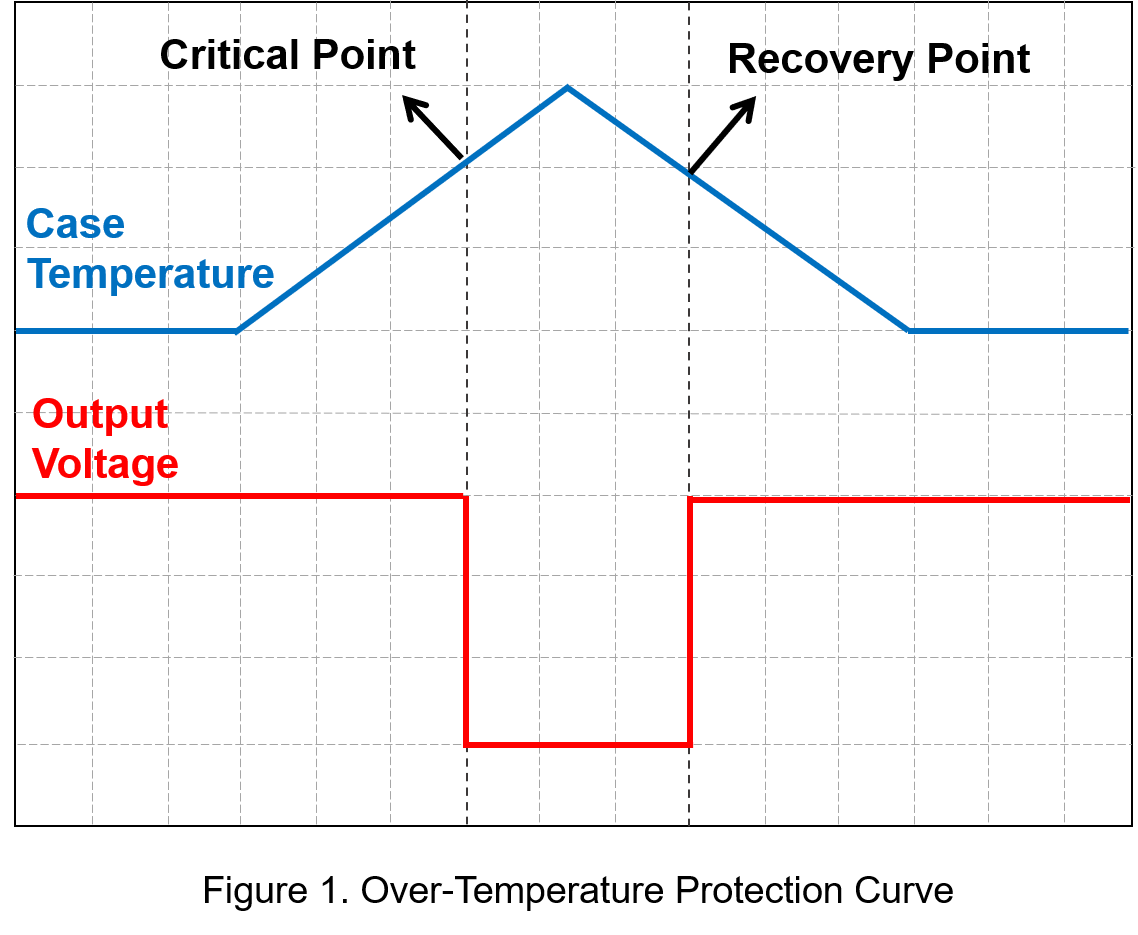
When the casing temperature of the power converter reaches the threshold, overtemperature protection must be precisely triggered. If the protection mechanism can detect temperature changes more accurately and quickly, it can adjust the load current more precisely and promptly, reducing the risk of thermal overload. Choosing a power converter with a built-in temperature sensing controller eliminates the need for an additional temperature switch, reducing component count and PCB size, enabling a more compact and reliable design. The internal temperature sensor is shown in the diagram below.
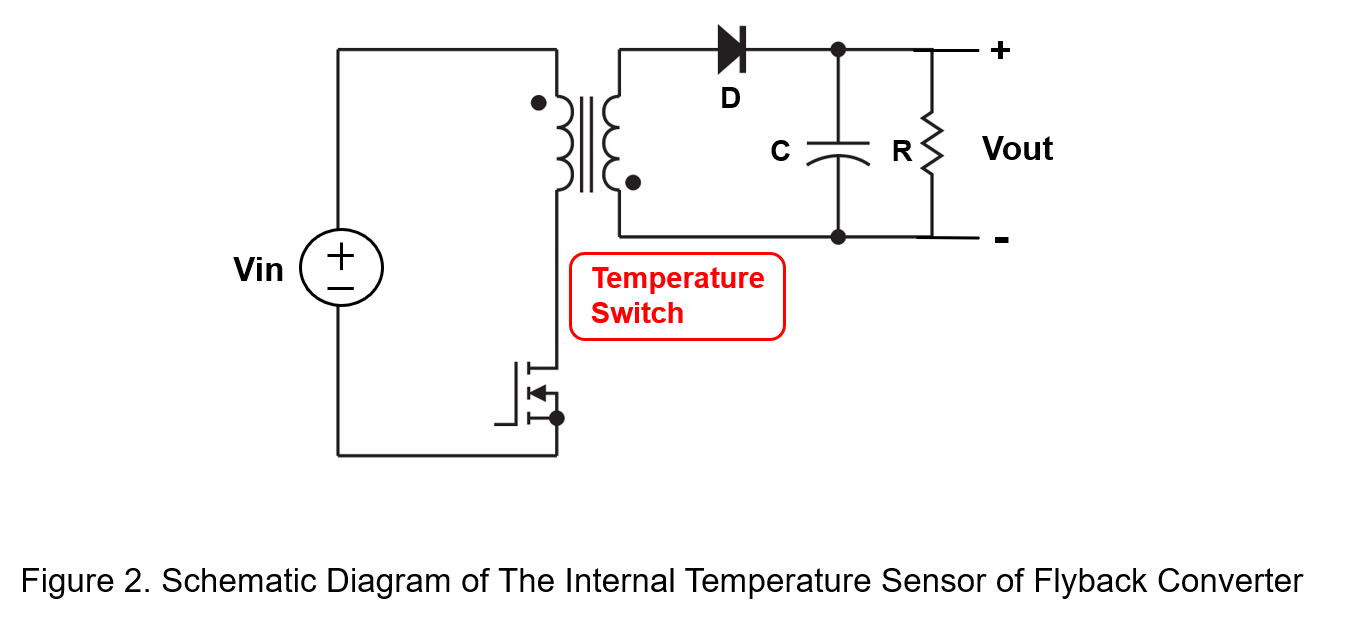
Detection Methods of Overtemperature Protection
The temperature sensor built into the power converter uses an IC to provide overtemperature protection, ensuring high accuracy and fast thermal response time. Typically, temperature faults are monitored using thermistors, Zener diodes, and comparators, as shown in the diagram below.

The controller's recovery mechanism has hysteresis characteristics. It requires the automatic recovery timer to elapse and the voltage of the detection pin to reach the recovery threshold before it can automatically resume operation. This method ensures a minimum recovery time from thermal overload. Unless the fault recovery threshold is met, the power converter will not restart.
In high-power power converter designs, the temperature sensor IC detects temperature changes by monitoring the resistance variation of thermistors, particularly those placed near power transistors and transformers. Placing thermistors near heat sources ensures accurate fault signal detection when temperatures exceed safe limits. Thermistors are low-cost and compact, making them commonly used in power converters. Additionally, Positive Temperature Coefficient (PTC) and Negative Temperature Coefficient (NTC) thermistors serve different functions in power converters.
The Role of Thermistors in Power Converters
Thermistors are resistors highly sensitive to temperature, typically made of ceramics or metal oxides. They offer high sensitivity and low cost, with resistance values that change exponentially with temperature. Based on the relationship between resistance and temperature, they are categorized into PTC and NTC thermistors.
1. PTC Thermistors
PTC thermistors are primarily composed of ceramics or polymers with high-temperature coefficients. Their resistance is low at room temperature. As temperature rises, their resistance initially decreases slightly but rapidly increases once the temperature exceeds the critical temperature (Tc), as shown in the diagram below.
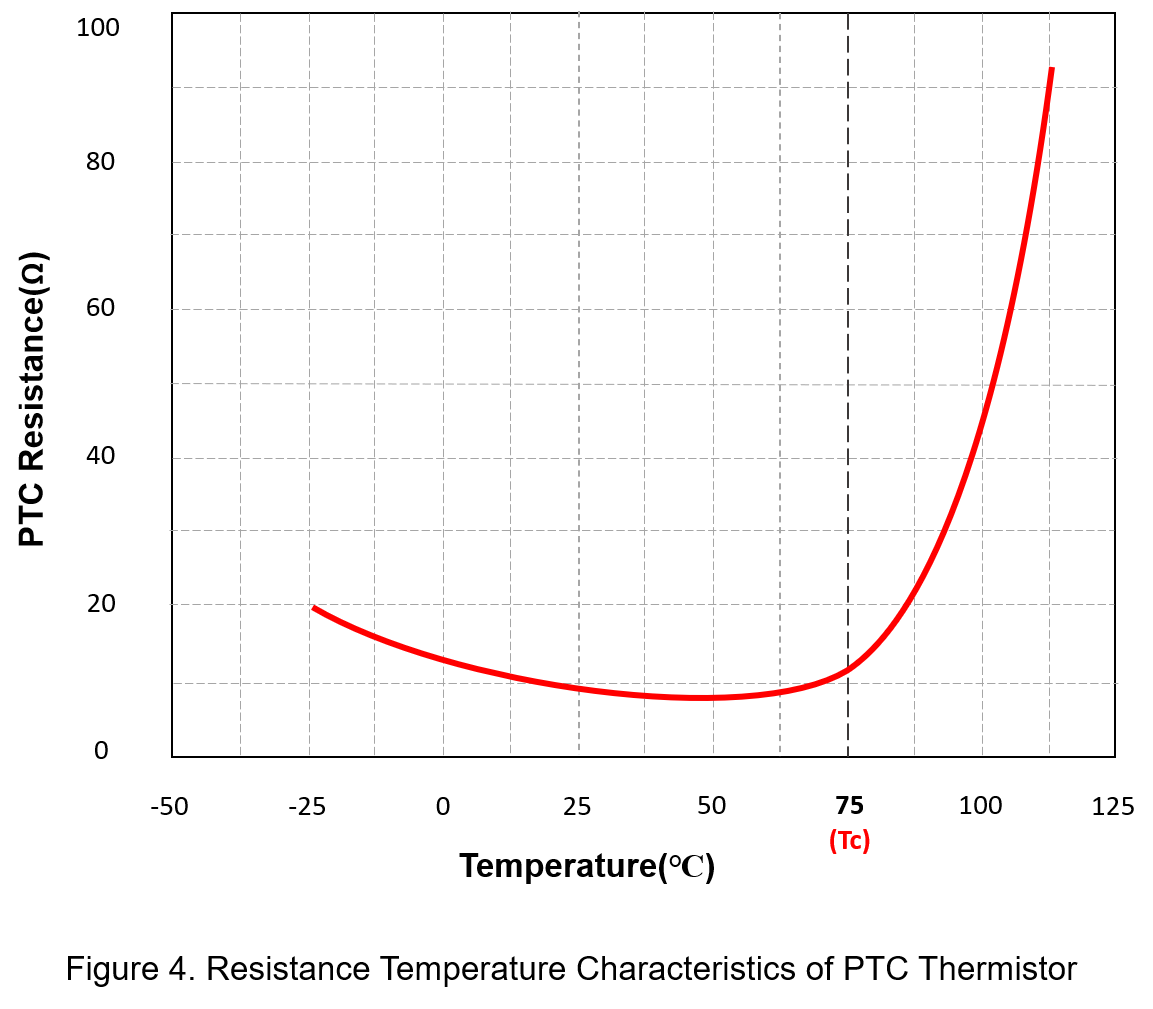
The positive temperature coefficient characteristic of PTC thermistors is often used for overcurrent protection, short-circuit protection, and temperature monitoring. For example, in overcurrent protection applications, when excessive current causes temperature to rise, the resistance of the PTC thermistor increases sharply, limiting current flow and protecting the circuit. However, since PTC thermistors exhibit abrupt resistance changes beyond a certain temperature, they are less suitable for precise temperature measurement on circuit boards.
2. NTC Thermistors
NTC thermistors are made of ceramic materials containing two or more metal oxides and can achieve high accuracy in the temperature range of -80°C to 140°C. Their resistance decreases as temperature rises, as shown in the diagram below.

At room temperature, NTC thermistors have high resistance, making them suitable for series connections at the input end of power converters to suppress inrush currents during power-on. Once the power is turned on for a period, the current flowing through the NTC thermistor causes its temperature to rise, drastically reducing its resistance to a negligible level, minimizing its impact on the power system. NTC thermistors offer excellent low-temperature resistance and high sensitivity at low temperatures. Their resistance decreases exponentially as temperature rises, allowing for fast and accurate temperature detection, making them widely used in precision circuit temperature monitoring.
Single-Point Detection vs. Multi-Point Detection
In high-power power converter designs, temperature sensors are integrated into PCBs near high-temperature components or placed on the PCB backside of these components to capture temperature changes more sensitively and ensure accurate thermal monitoring. Depending on the application scenario, temperature detection can be classified into single-point calibration and multi-point calibration.
1. Single-Point Calibration
Single-point calibration involves measuring temperature at a specific location, typically the hottest point, such as the power converter's transformer, as shown in the diagram below.
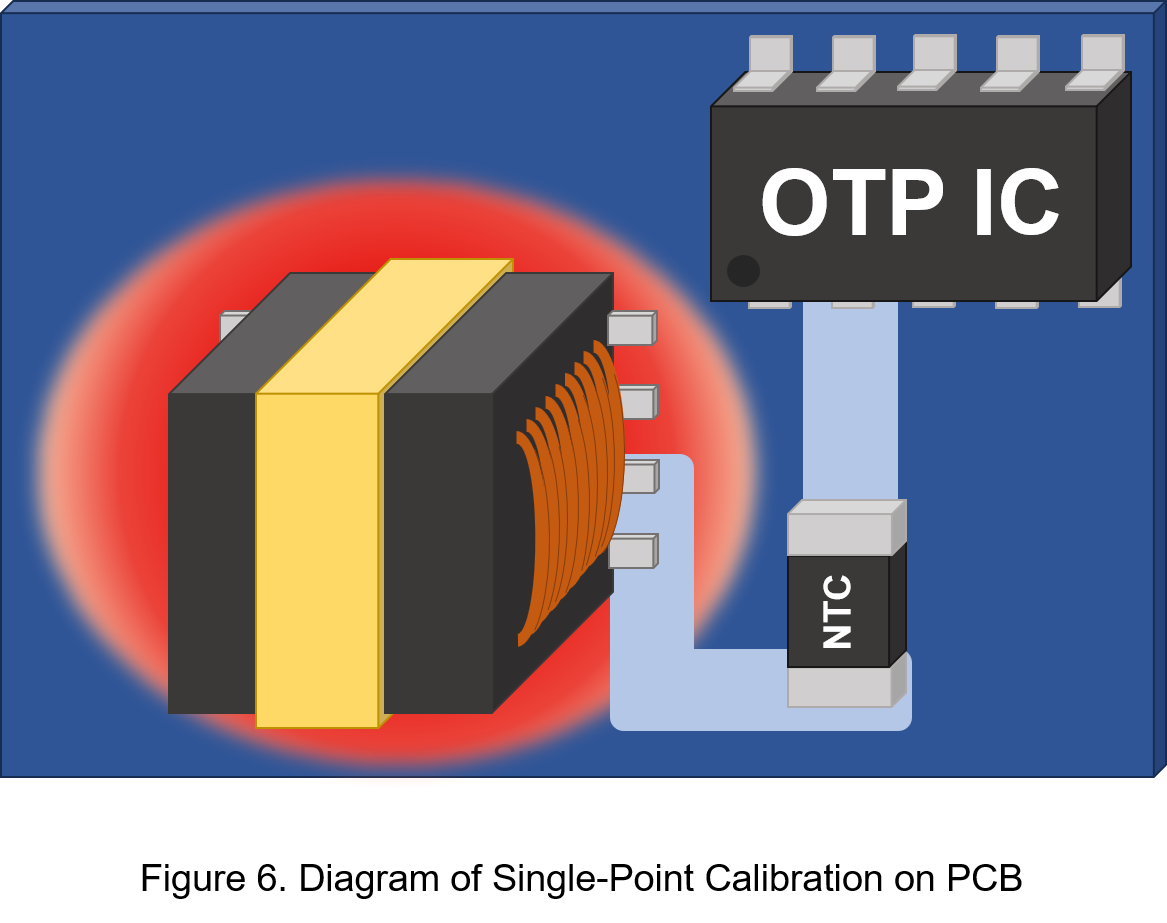
If the equipment undergoes potting, it helps evenly distribute heat. In this case, single-point calibration can effectively prevent premature OTP activation due to measurement errors. However, for larger devices with dispersed heat sources, single-point calibration may only reflect localized temperatures while overlooking overheating in other areas. To enhance OTP effectiveness, multi-point calibration may be considered.
2. Multi-Point Calibration
Multi-point calibration involves placing temperature sensors at multiple critical locations, such as components with high current flow, transformers, and high-temperature regions like the casing. By placing thermistors closer to the casing, ambient temperature effects can be detected and mitigated. This method integrates multiple NTC thermistors directly into the charger PCB circuit, as illustrated below. With a multi-point calibration setup, even if heat sources are concentrated on the PCB edges, thermistors can still promptly detect temperature changes.
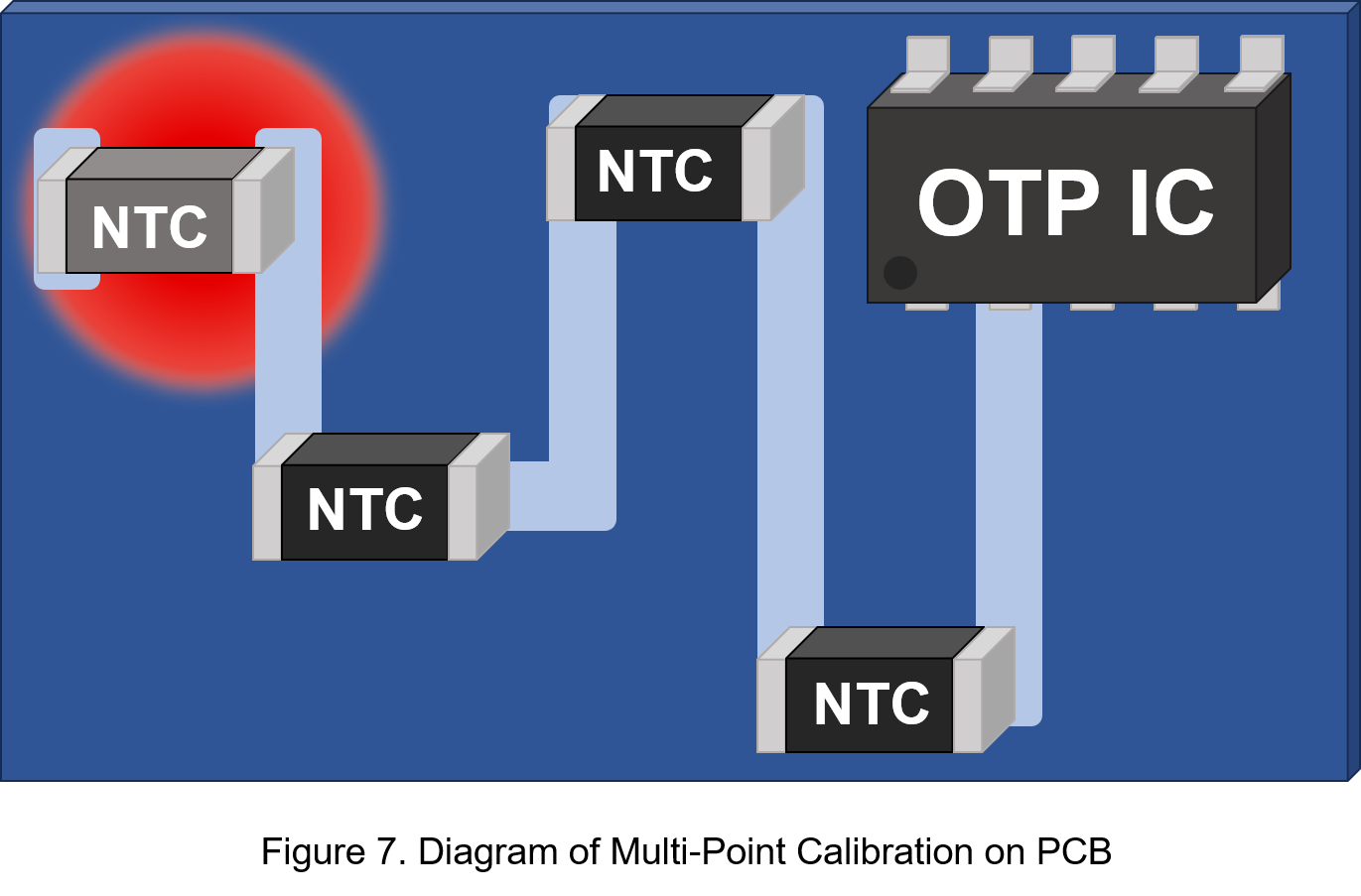
Multi-point calibration provides more comprehensive temperature monitoring, ensuring that neither the central point of the casing nor internal temperature sensors fail to reach temperature fault thresholds due to inadequate detection, thus preventing overheating issues. This approach improves thermistor linearity, offering more accurate and reliable temperature readings. However, it increases component costs and requires additional PCB space.
Conclusion
To ensure that power converters operate within their designed temperature range, effective temperature monitoring is essential for maintaining electrical performance and reliability. PTC and NTC thermistors each have distinct application characteristics. PTC thermistors have a critical temperature point, making them suitable for overheating protection by selecting different critical temperatures. NTC thermistors, with their exponentially decreasing resistance at higher temperatures, offer high precision.
Single-point and multi-point temperature detection each have their advantages and are suited for different applications. For small or medium-sized devices with concentrated heat sources, single-point calibration is a simple and effective choice. For larger devices with widely distributed heat sources, multi-point calibration provides more comprehensive temperature monitoring, effectively preventing overheating issues and ensuring system stability and safety.
CTC is service provider for high-end power modules (DC to DC Converter and AC to DC Converter) for critical applications worldwide since 1987. We aim to be business generator and a virtual business unit. CTC is your own team with 35 years of experience for a strong business program from market research, product definition & development, supply chain management and total technical services.
CTC is the only corporation certificated with ISO-9001, IATF-16949, ISO22613(IRIS), and ESD/ANSI-2020. We can 100% ensure not only the product, but also our workflow and service to match quality management system for every high-end application from the very beginning. From design to manufacturing and technical support, every single detail is operated under highest standard.

